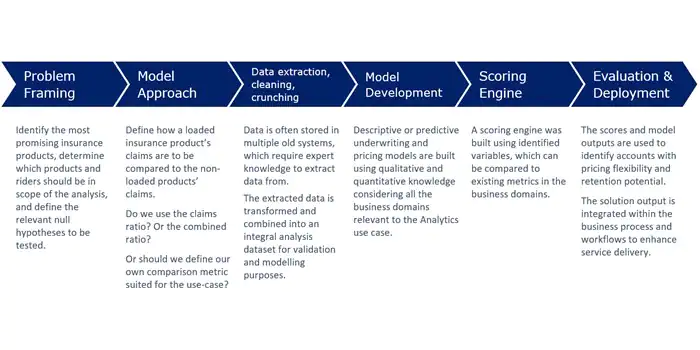Introduction to Insurance Claims Data Analytics
Triston Martin
Dec 24, 2022
Introduction
Insurance claims data analytics is collecting, analyzing, and interpreting large amounts of data related to insurance claims. This process helps insurers make better decisions about which policies they offer and how they manage risk. By understanding what types of claims are most frequent, where they occur, and how much they cost, insurers can develop strategies that reduce costs while still offering high-quality coverage. With the right analytics tools and processes, insurance companies can stay ahead of their competition and increase profitability.
Overview of How Insurance Companies Use Data Analytics
Data analysis is important in helping insurers make decisions about their policies. Insurers use data analysis to identify claim frequency, severity, and cost trends. This information can help insurers determine which policies to offer and which to drop, as well as pricing strategies for the products they offer. Additionally, data analytics allows insurers to identify risky customers or areas better and set higher premiums accordingly. Insurers use various data-driven tools and techniques to analyze their claims data.
Examples include predictive modeling, machine learning algorithms, decision trees, regression analysis, clustering algorithms, natural language processing (NLP), sentiment analysis, text mining, and more. By leveraging these powerful tools, insurers can gain valuable insights into how risk is distributed among policyholders and locations.

Benefits of Insurance Claims Data Analytics
Utilizing insurance claims data analytics has numerous benefits for insurers. For instance, insurers can use data analysis to identify policyholders who are more likely to make a claim. This helps them set higher premiums for high-risk customers and lower prices for those with low-risk profiles. Additionally, data analytics can help insurers detect fraud and ensure that their policies are properly priced based on the risk associated with each customer. Finally, insurance companies can use insurance claims data analytics to improve customer service by accurately predicting customer needs.
Purpose of Insurance Claims Data Analytics
Insurance claims data analytics is an increasingly important part of the insurance industry, with companies relying on this tool to understand customer behavior better, identify fraud and optimize claims processing. Insurance data analytics involves collecting, analyzing, and interpreting large amounts of data related to insurance claims to draw actionable conclusions. This includes predictive modeling, risk assessment, and cost analysis.
Insurance companies can use analytics to improve customer experience by providing tailored products that meet customer needs. For example, they can use analytics-based insights to help customers choose more suitable policies for their lifestyles or budget. Analyzing customer data also helps insurers identify patterns in customer behavior which can then be used to predict future trends and inform decisions about policy pricing, policy design, and risk management.
Insurance analytics can also detect fraud by analyzing customer claims data for suspicious patterns. By utilizing predictive analytics, insurers can quickly and efficiently identify potential fraud cases before they escalate into larger issues. Analytics can also help streamline the claims processing process by identifying claims that should be handled immediately or may need more investigation before being settled. Insurance companies can allocate resources more effectively and minimize losses associated with fraudulent activity.
Finally, insurance data analytics is an effective tool for improving cost control in the industry. Through analysis of customers’ purchasing habits and policy usage, insurers can anticipate their future needs and make informed decisions about pricing policies accordingly. This helps them keep costs down while providing customers with the necessary coverage.
Overall, insurance claims data analytics is an important tool for insurers to understand their customer base better and manage risk more effectively. By utilizing predictive models and analyzing customer behavior, insurers can provide better services while reducing losses related to fraud or mispricing policies. This helps them remain competitive in the industry and maximize profitability.

Conclusion
Insurance claims data analytics is essential for modern insurers looking to stay ahead of their competition and maximize profits. By utilizing advanced tools such as predictive models, machine learning algorithms, decision trees, clustering algorithms, natural language processing (NLP), sentiment analysis, text mining, and more—insurers can gain valuable insights into how risk is distributed among different policyholders and locations. Additionally, data analytics can help insurers detect fraud, identify high-risk customers, and improve customer service. With the right tools and processes, insurers can take advantage of these powerful insights to stay ahead of the competition and increase profitability.







